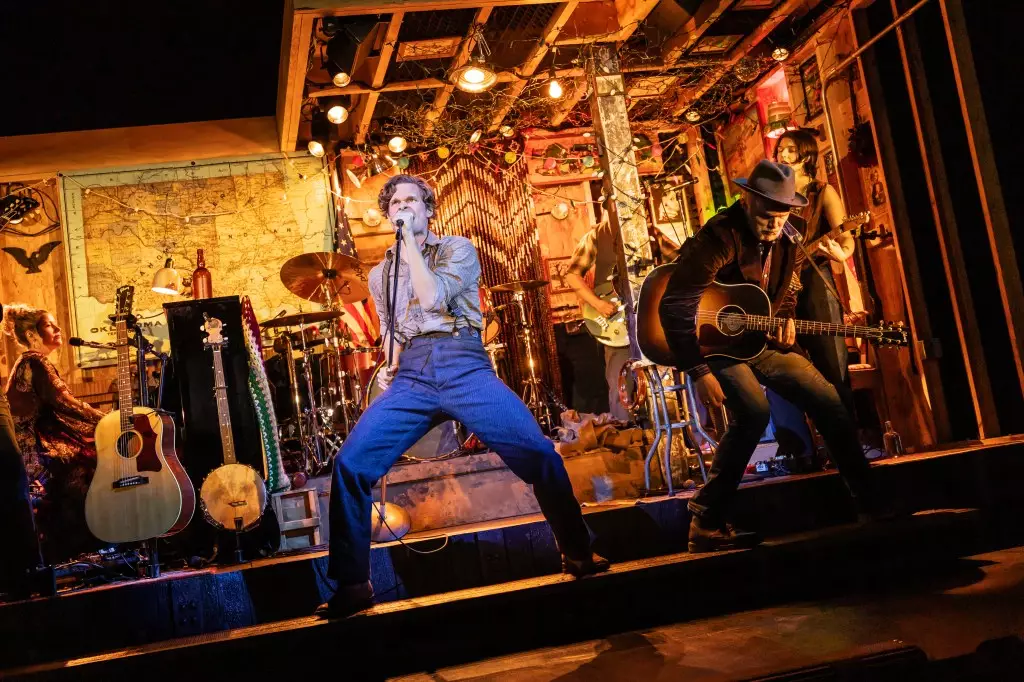Broadway is notorious for its fluctuations, but the buildup to the Tony Awards offers a fascinating case study on the interplay between critical acclaim and commercial viability. As we approach the awards ceremony on June 8, this year has brought with it a broad range of performances, each with its unique trends in ticket sales and audience engagement. The correlation between nominations and box office revenue is a topic worthy of scrutiny, particularly in light of the current year’s tumultuous landscape.
Nominations vs. Reality: A Double-Edged Sword
It’s no secret that contenders eagerly await their Tony nominations, as they can significantly influence ticket sales. Yet this year presents a curious anomaly. “Redwood,” starring Broadway superstar Idina Menzel, received no nominations whatsoever but still managed to report a surprising box office gain. This illustrates the unpredictable nature of audience appeal: sometimes a lack of nominations can create an underdog narrative that piques interest in an unexpected way. The show’s final week saw an increase of $191,581, culminating in a total gross of $818,697—an impressive feat, albeit with attendance that never quite broke the 85% threshold.
In contrast, “The Picture of Dorian Gray” experienced a substantial rise of $120,388 following its six nominations. However, this performance boost was significantly influenced by the addition of a seventh show that week, emphasizing that while nominations can drive sales, other factors often come into play as well. The reality is that a small boost in ticket availability can outweigh even the most coveted nominations, highlighting the intricate puzzle that is Broadway’s ticketing ecosystem.
The Winners and the Strugglers: A Broader Analysis
An analysis of box office trends reveals a mixed bag among this year’s top contenders. “Good Night, And Good Luck” and “Sunset Blvd.” saw significant gains of $143,803 and $146,711 respectively, with the former showcasing George Clooney’s star power fueling its momentum. In stark contrast, shows like “Smash” and “Gypsy” reported declines, which begs the question: does having minimal nominations while still featuring established stars hamper their growth more than it helps?
Furthermore, consider the phenomenon of “John Proctor Is The Villain” at Booth Theatre, which has thrived in a sell-out environment with a rise of $37,852. This show capitalizes on the current cultural zeitgeist of discourse surrounding historical narratives, positioning itself as a poignant piece amidst a crowded marketplace. The direct correlation between the narrative’s relevancy and box office success underscores the broader implications of cultural engagement within the arts.
Such dynamics raise an important query: how do shows adapt their marketing strategies when nominations fail or succeed? “Othello,” a shut-out in nominations, saw a minimal dip in revenue of $23,367 while still enjoying impressive box office figures. This resilience can be attributed to prior critical acclaim and consistent audience interest, encapsulating how a strong legacy can mitigate the impact of current trends.
The Role of Average Ticket Prices: A Hidden Variable
Amidst these box office battles, sometimes overlooked metrics such as average ticket prices can paint a telling picture. For example, “Glengarry Glen Ross,” although down $19,292, drew almost full capacity at an average ticket price of $231.98. It serves to illustrate that a high-ticket price doesn’t necessarily equate to lower sales, especially if the demand remains strong. This contrasts sharply with shows like “Boop! The Musical,” which, struggling with attendance and an average ticket price of $68.05, reflect the pitfalls associated with underestimating audience value perception.
Potentially, the dynamic pricing model may serve as another critical factor in determining the trajectory of these shows. The way tickets are priced and marketed influences not only the perceived value but also engages different audience demographics.
The Broadway Landscape: A Reflection of Cultural Shifts
Overall, the fluctuations we observe within Broadway are not merely about awards and recognition; they speak to deeper cultural dialogues, shifts in consumer behavior, and artistic innovation. The interplay between audience engagement and critical esteem creates a multifaceted environment that continues to evolve. As we watch this season come to its climax, it becomes clear that the true narrative lies in understanding how these metrics reflect broader societal trends—one that transcends the shiny veneer of awards and dives deeply into the essence of storytelling on stage.
This year’s Tonys certainly highlight the creative landscape’s unpredictability and its profound connection with the audience’s evolving aspirations and tastes. As a result, the road to the awards might just serve as a character study in itself, dissecting the narratives we create around success, failure, and everything in between on Broadway.

